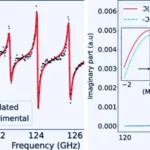Key Points
- Scientists uncovered the key to regulating our body’s internal clock by identifying how CK1δ regulates circadian rhythms through phosphate tagging.
- δ1 and δ2 are the two versions of CK1δ, differ in their self-regulation, impacting their activity.
- Findings could lead to new treatments for circadian rhythm disorders and other conditions.
- Future research will explore how external factors influence CK1δ and circadian regulation.
Researchers from Duke-NUS Medical School and the University of California, Santa Cruz, have uncovered a critical mechanism for regulating our internal biological clock. Their study, published in the journal PNAS, focuses on the role of Casein Kinase 1 delta (CK1δ), a protein that acts as a key regulator of circadian rhythms, which control sleep-wake cycles and other essential daily functions.
CK1δ fine-tunes the timing of these rhythms by modifying other proteins involved in the biological clock. Importantly, CK1δ can also regulate itself by being tagged with phosphate groups, reducing its activity. The researchers identified two versions of CK1δ, called δ1 and δ2, which differ by just 16 amino acids at the end of the protein in a region known as the C-terminal tail. Despite this small difference, these two versions have significantly different impacts on CK1δ’s activity.
The researchers used advanced spectroscopy and spectrometry techniques to pinpoint three key sites on CK1δ’s tail where phosphate groups attach. They discovered that CK1δ’s ability to regulate the body’s internal clock is diminished when these sites are tagged. Professor Carrie Partch, co-author of the study, emphasized that this discovery provides a clear understanding of how CK1δ activity is controlled, which has been a mystery for decades.
Professor David Virshup, another co-corresponding author, added that δ1 is more tightly self-regulated than δ2 due to how its tail interacts with the rest of the protein. When the tagging sites on δ1 are altered or removed, the protein becomes more active, leading to changes in circadian rhythms. In contrast, δ2 does not exhibit the same level of self-regulation.
This breakthrough sheds light on the delicate balance of CK1δ’s activity, crucial for maintaining healthy circadian rhythms. Beyond regulating the body’s clock, CK1δ is also involved in critical processes such as cell division, cancer development, and certain neurodegenerative diseases. Understanding how CK1δ functions could lead to new treatments for various conditions, including circadian rhythm disorders.
Moving forward, the researchers plan to study how factors like diet and environmental changes affect the tagging of CK1δ, potentially offering practical solutions for managing disruptions to circadian rhythms.










